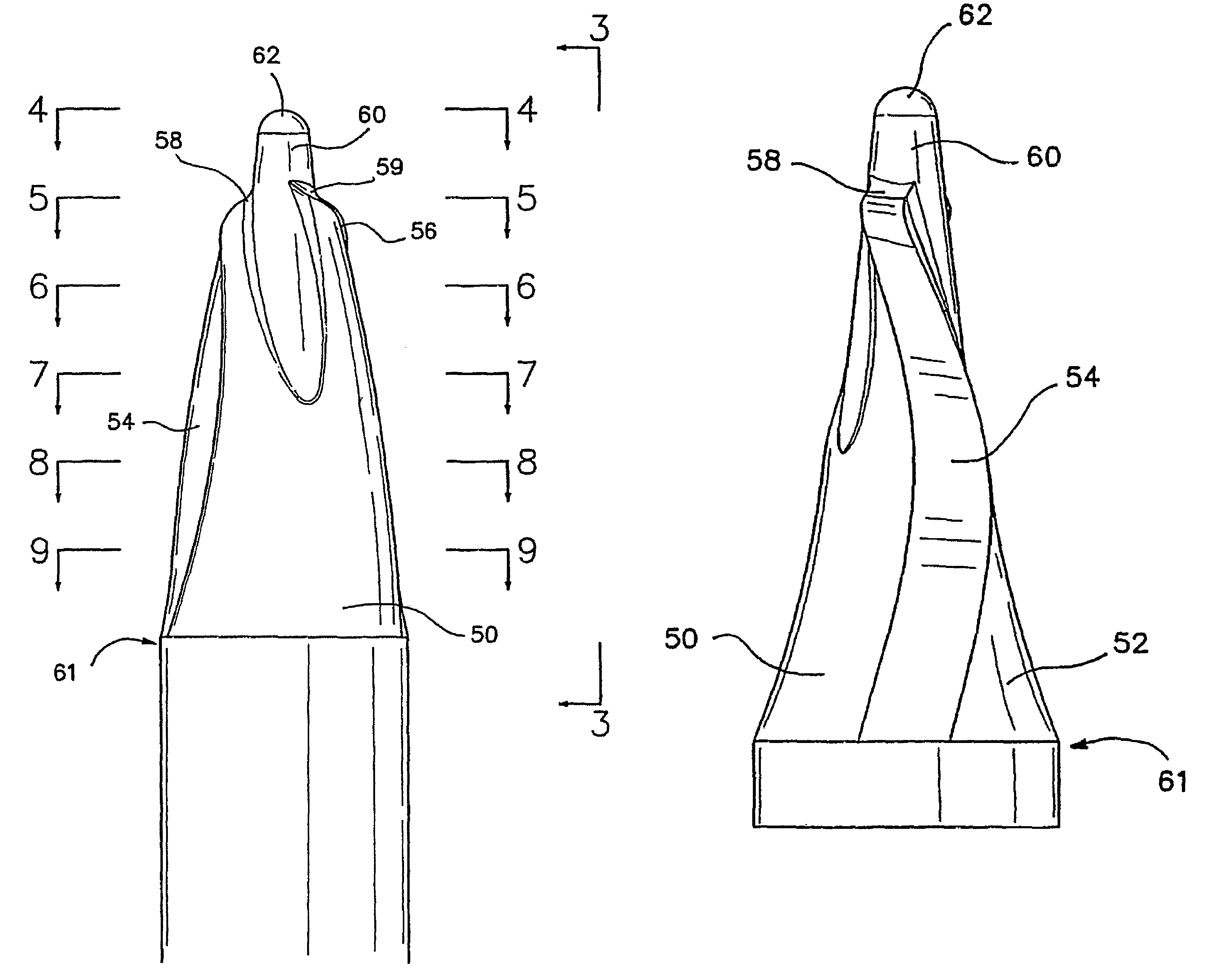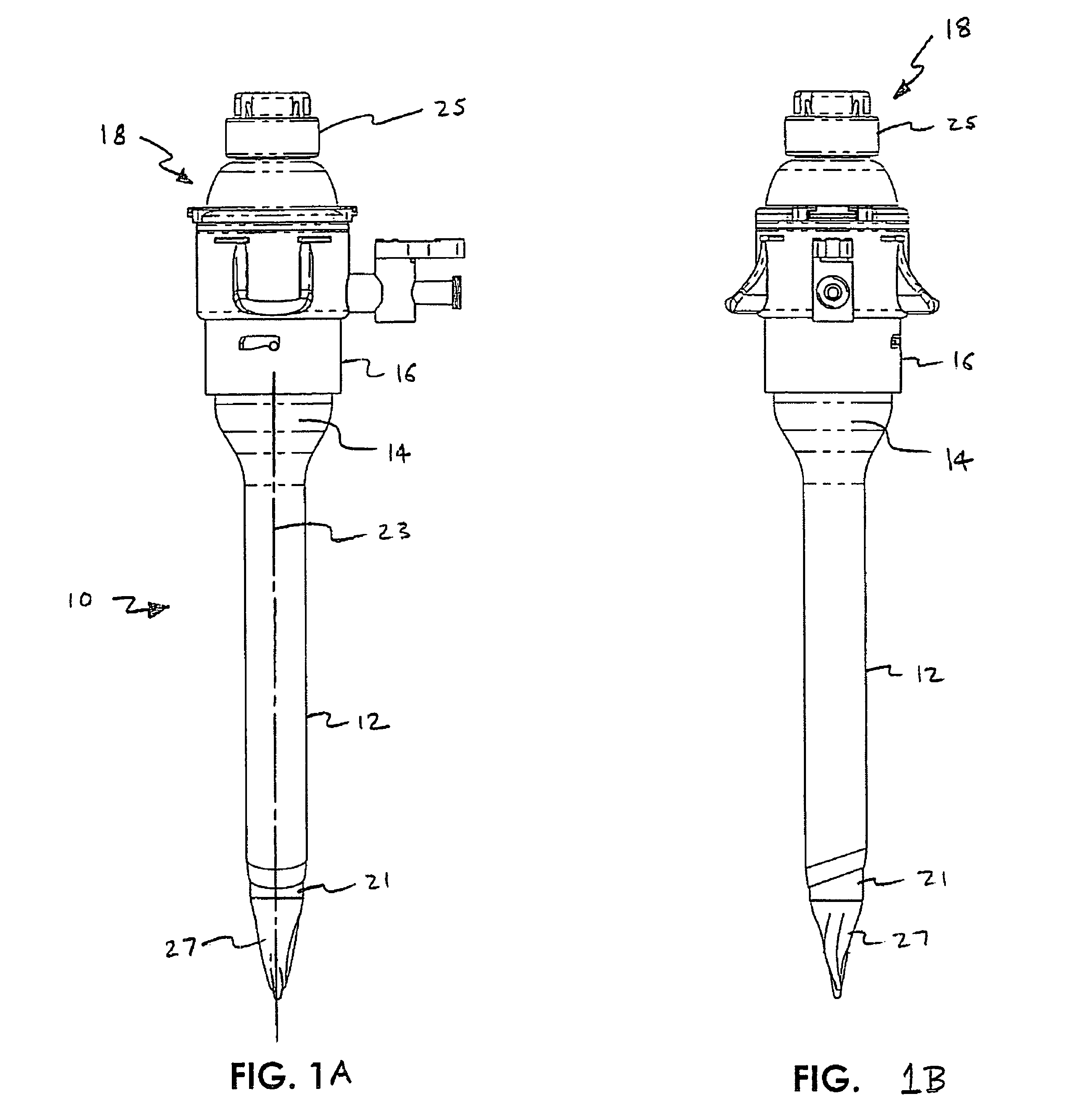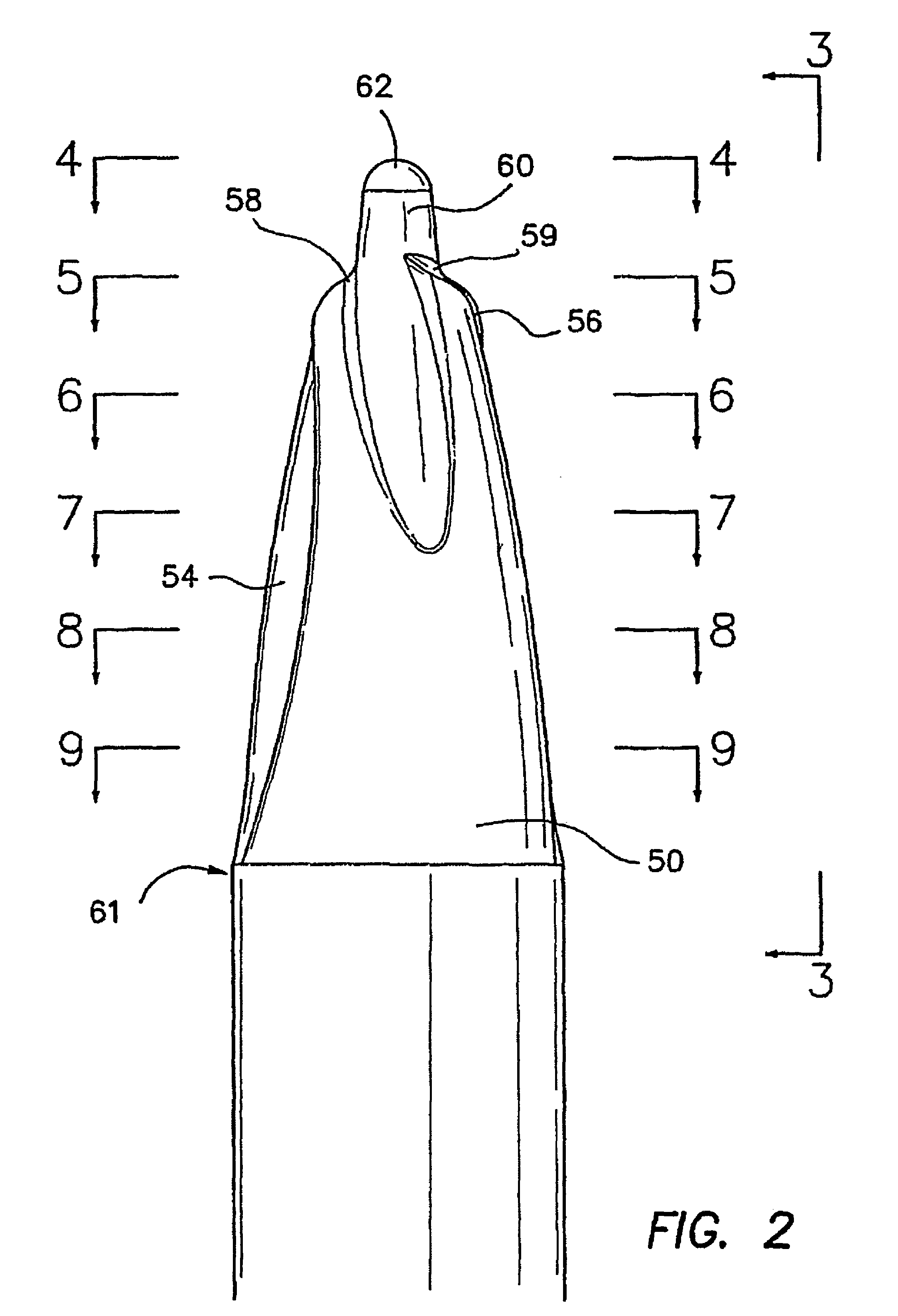Bladeless optical obturator
a technology of optical obturators and blades, which is applied in the field of trocar systems, can solve the problems of increased operating room costs and procedural time, large trocar site defects, and damage to vessels and organs, and achieve the effect of facilitating frictional engagemen
- Summary
- Abstract
- Description
- Claims
- Application Information
AI Technical Summary
Benefits of technology
Problems solved by technology
Method used
Image
Examples
Embodiment Construction
A trocar system is illustrated in FIG. 1 and is designated by reference numeral 10. This system includes a cannula 12, defining a working channel 14, and a valve housing 16. The system 10 also includes an obturator 18 having a shaft 21 extending along an axis 23. A handle 25 is disposed at a proximal end of the shaft 21 while a blunt tip 27 is disposed at a distal end of the shaft 21. The shaft 21 of the obturator 18 is sized and configured for disposition within the working channel 14 of the cannula 12. With this disposition, the obturator 18 can be placed across a body wall such as the abdominal wall to provide the cannula 12 with access across the wall and into a body cavity, such as the peritoneal or abdominal cavity. The blunt tip 27 serves to direct the obturator 18 through the abdominal wall and the peritoneum, and can be removed with the obturator 18 once the cannula 12 is operatively disposed with the working channel 14 extending into the abdominal cavity. The diameter of t...
PUM
 Login to View More
Login to View More Abstract
Description
Claims
Application Information
 Login to View More
Login to View More - R&D
- Intellectual Property
- Life Sciences
- Materials
- Tech Scout
- Unparalleled Data Quality
- Higher Quality Content
- 60% Fewer Hallucinations
Browse by: Latest US Patents, China's latest patents, Technical Efficacy Thesaurus, Application Domain, Technology Topic, Popular Technical Reports.
© 2025 PatSnap. All rights reserved.Legal|Privacy policy|Modern Slavery Act Transparency Statement|Sitemap|About US| Contact US: help@patsnap.com



